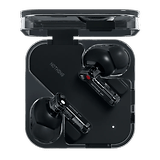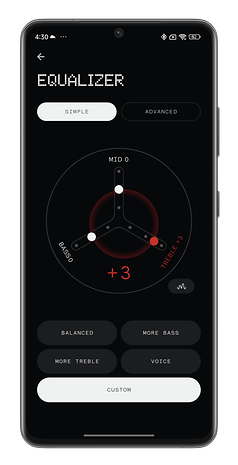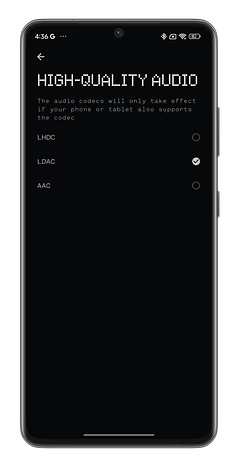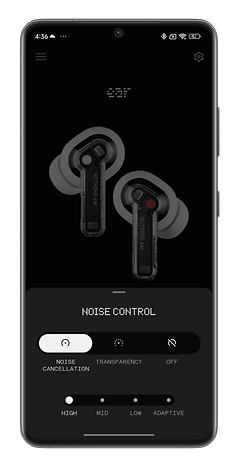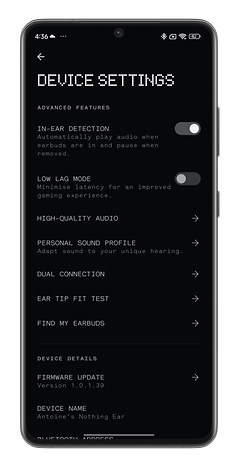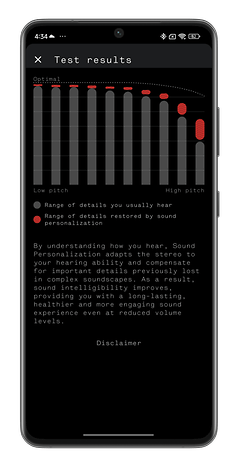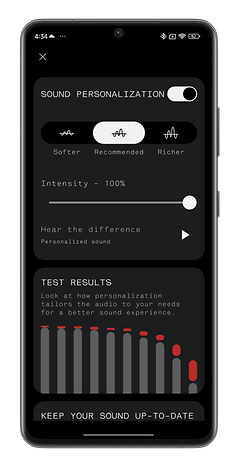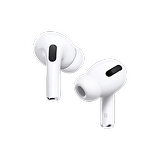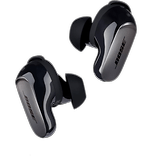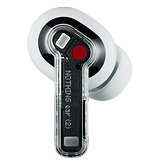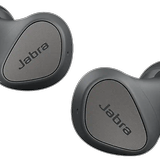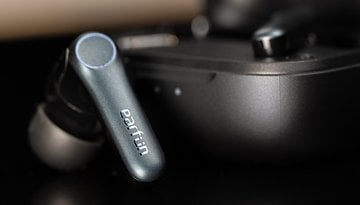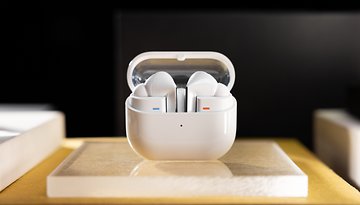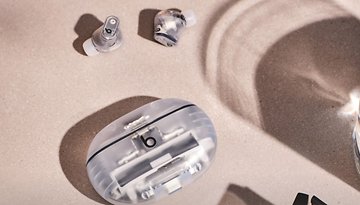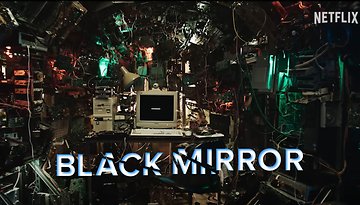Nothing Ear Review: Almost Unbeatable Value-For-Money
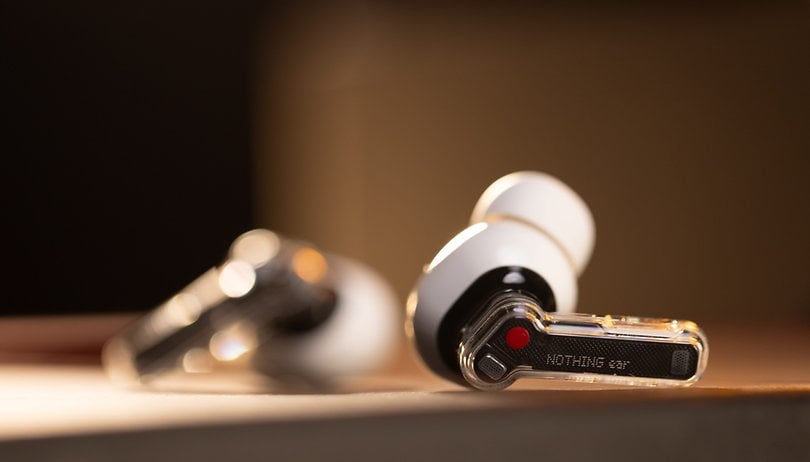

Nothing, the coolest European tech brand at the moment, just launched a new pair of true wireless earbuds. After the Nothing Ear (2), we now have the Nothing Ear. Yup, that's it! The Nothing Ear marks a reboot of the Nothing audio catalog. Priced at $149 per pair, they are Hi-Res certified, support HD audio codecs such as LDAC and LHDC, and feature Active Noise Cancellation. I share my opinion about the Nothing Ear in this full review.
Good
- Hi-Res certified
- LDAC and LHDC 5.0 codecs supported
- Far more balanced audio signature
- Good Active Noise Cancellation
- Solid battery life
Bad
- Design is identical to its predecessor
- Not the best passive noise insulation
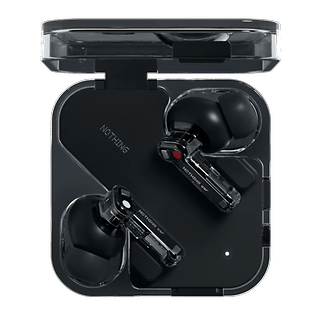
In a nutshell
The Nothing Ear are available in the US for $149 a pop. Nothing's true wireless earbuds will arrive in two colors as usual: black and white. This time, both variants are available at launch without requiring you to wait for the color you desire. You can buy them on Nothing's official store and on Amazon.
Design
The Nothing Ear is a carbon copy of the Nothing Ear (2). I could go on and on about the subtle internal changes in Nothing's new true wireless earbuds but in reality, you won't notice any visual difference.
Pros:
- IP54-certified earbuds with IP55 certification for its case.
- Semi-intra-ear format, lightweight, and comfortable to wear.
- Wear detection.
- Responsive haptic controls.
Cons:
- Looks exactly like the Nothing Ear (2).
- Scratch-prone transparent plastic case.

I'm going to skip over the design. There's the transparent look that's typical of Nothing products and the earbuds are very compact and lightweight, tipping the scales at less than 5g. The case is also highly portable, weighing in at just under fifty grams.
The Nothing Ear case is also IP55 certified for water and dust resistance. It's still quite rare to have an IP-certified case even on high-end models. The earbuds themselves are IP54 certified, allowing you to wear them for sports and use them while you are out in the rain. Just don't immerse them in water!
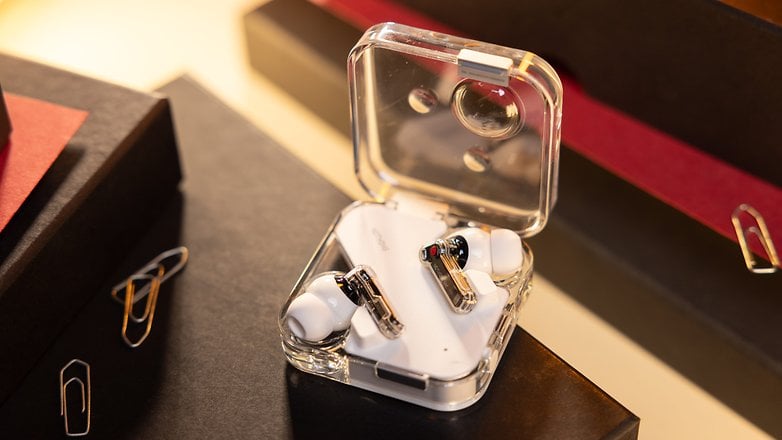
The Nothing Ear feature wear detection, which is great. Above all, you get haptic controls. It's a perfect middle ground between physical and tactile buttons in my opinion. Simply press the stem to activate the haptic controls. This avoids the false input that is commonly associated with touch controls, while retaining a monolithic design without the physical buttons. The controls are also highly customizable.
I mentioned this because Nothing has invested quite a lot in this department, especially in terms of production costs. Nothing Ear drivers feature ceramic diaphragms. This is an expensive material that supposedly offers better frequency response and a more detailed sound. However, we're sticking with 11 mm dynamic drivers, which is a rather classic choice. I can't tell you what ceramics actually do in real-world performance.
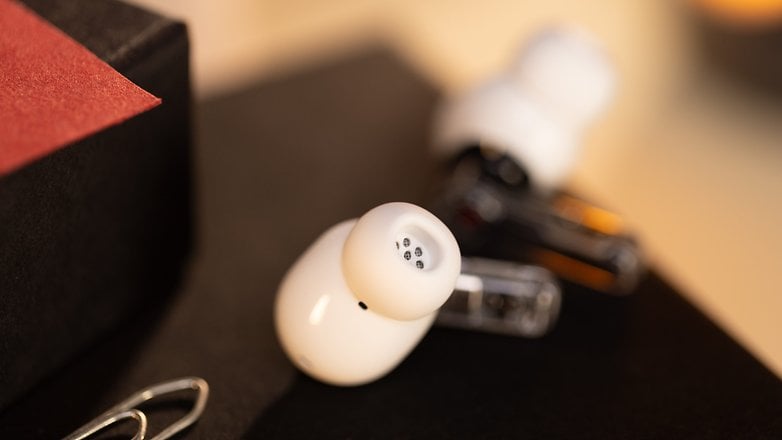
Audio quality
The Nothing Ear offers a clear step up from the Ear (2) in terms of audio quality, at least on paper. Nothing's wireless earbuds are Hi-Res certified and support HD codecs. We're obviously not talking about audiophile-level quality here, but we can listen to something a little better than compressed MP3 files. That's a very good thing, considering the price.
Pros:
- Hi-Res certification.
- LDAC and LHDC codecs supported.
- A more balanced audio signature.
Cons:
- -
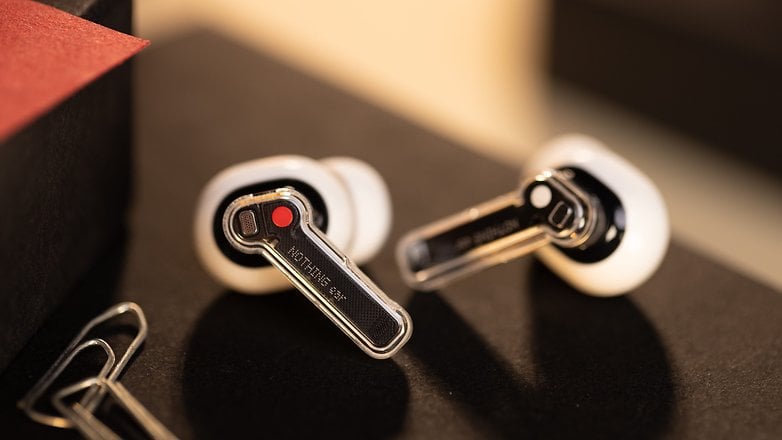
A more balanced audio signature
The primary shortcoming of the Nothing Ear (2) last year was its unbalanced audio signature. Nothing seems to have fixed this.
These are "naked" ear impressions. I do not have the necessary tools to draw up a frequency curve and verify my very subjective opinion. However, I have the distinct impression that the Nothing Ear is more balanced this time around.
The bass is much more restrained, especially if you deactivate the "Bass Boost" mode (which seems to be activated by default). The rest of the music benefitted greatly from this. For the treble, there are fewer peaks, making listening less tiring in the long run.
Above all, Nothing's EQ, which is very advanced this year, allows you to create extremely precise EQ filters to create your profiles. I'll talk more about that later in this review.
Hi-Res audio and HD codecs
The Nothing Ear are Hi-Res certified and support Bluetooth HD codecs: LDAC and LHDC 5.0. What does this mean for the consumer?
Hi-Res certification means the Nothing Ear are capable of reproducing audio files of higher quality than MP3 or CD quality. To be more precise, tracks with 24-bit depth, a 192 Hz sampling rate, and a maximum bit rate of 9216 kbps will play nice with the Nothing Ear. If you did not understand what I just wrote, check out this article for a better understanding about audio quality in your headphones and earbuds.
Let's move on to the Bluetooth codecs supported by the Nothing Ear. LDAC allows you to listen to songs at a maximum bit rate of 990 kbps. At this bit rate, sound remains lossy when listening to Hi-Res tracks. LHDC 5.0 lets you listen to 24-bit/ 192 kHz tracks at 1 Mbps, or 1000 kbps. The bit rate is better, but despite being Hi-Res, the sound is still lossy.
Basically, this means you can listen to less compressed audio files. However, the Bluetooth signal will still be compressed by the codec. Still, on paper, the Nothing Ear's performance are exemplary for their price.
A word of caution: don't be too obsessed about codecs. They vary in their bitrate to maintain a stable connection between the earbuds and your smartphone. LDAC bitrates can vary between 330, 660, and 990 kbps. LHDC can also reduce its bitrate to 900, 560/500, 400, and 256 kbps.
I've a tutorial that shows how you can change your smartphone's codec for a better listening experience. However, there's a reason why codecs vary in bitrate. It's up to you to choose what you prefer between audio quality and stability. Thankfully with the Nothing Ear, the choice is yours.
Active Noise Cancellation (ANC)
The Nothing Ear feature Active Noise Cancellation and a transparency mode. This ANC is more than good enough for earbuds that cost less than $150. I also like the fact that it's adjustable.
Pros:
- Good attenuation of structure-borne noise (footsteps, keyboard, cars, subway).
- Manually adjustable Active Noise Cancellation.
- Transparency mode is decent overall.
Cons:
- Airborne noise (voices) is less well attenuated.
- Voices in transparency mode lack a natural sound.
Nothing Ear's Active Noise Cancellation is very good. In fact, it's excellent considering their price. As always with all manufacturers, the earbuds have a little more trouble attenuating airborne noise and human voices. As for the rest, you can isolate yourself quite well phonically.
I like the fact that Nothing lets me adjust the intensity of the Active Noise Cancellation. You can choose from three levels or simply opt for the adaptive mode, which adjusts itself automatically. Once again, Nothing leaves the choice up to you.
According to the manufacturer, here are the scenarios envisaged for each Active Noise Cancellation level:
- High: in the subway or on a plane.
- Medium: on the street or in a café.
- Low: in the office or indoors.
Transparency mode is ok, but voice reproduction lacks naturalness. I didn't notice any hiss or distortion that was too annoying, either.
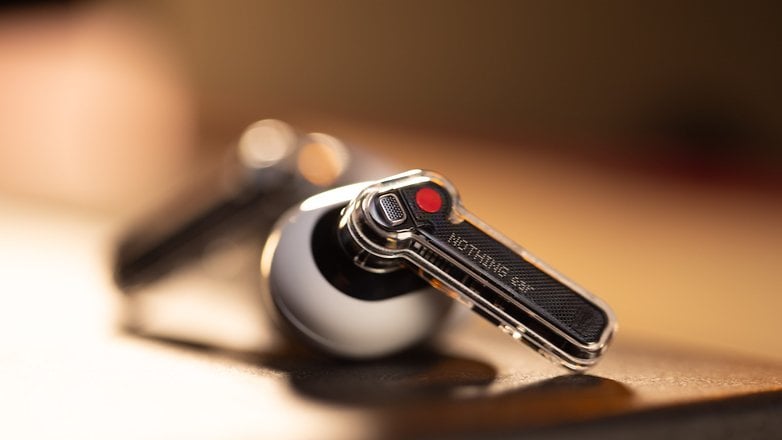
Application and features
Nothing Ear works in conjunction with the Nothing X app, which is available free of charge (and without the need for an account!) on Android and iOS. It's extremely comprehensive, featuring an advanced equalizer that is one of the major highlights in Nothing's new earbuds.
Pros:
- App is available on Android and iOS (no account required!).
- Multipoint port detection.
- Advanced equalizer is a killer feature!
Cons:
- -
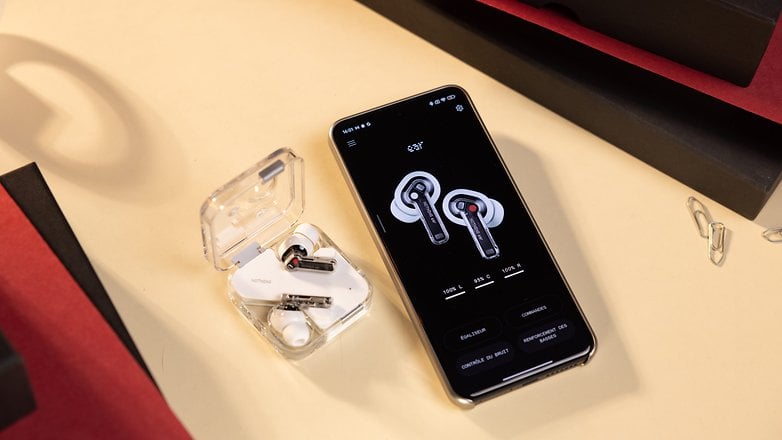
All the features I consider as "essential" are there. Wear detection, multipoint Bluetooth connectivity to pair the earbuds with two devices simultaneously, find my earbud, etc.
I found the sound customization function to be really cool. Not just in terms of usage, but to better understand how we perceive sound and which frequencies our ears have trouble picking up.
Basically, you can test your ears and see view well you hear from one end of the frequency range to the other, i.e. bass-midrange-highs. The application shows you how much detail you hear, and how much detail the equalizer had to compensate.
Finally, I loved playing with the advanced (rather than simple) equalizer. If you're an audiophile and know a thing or two about equalization, Nothing offers you much more advanced settings. What's interesting is that you can precisely target the frequencies you wish to amplify or attenuate, by entering them manually.
But above all, this equalizer lets you enter a Q factor. Basically, when you raise or lower the decibels of this or that frequency, you affect the "neighboring" frequencies. The Q factor defines the width of the frequency range you wish to affect with your EQ filter. The smaller the number, the wider the frequency range, and vice versa. So if you want to apply a filter (raising or lowering the volume of a frequency) in a very localized way, without it "spilling over" into the rest, this is very practical.
However, be careful not to do anything that could spoil your sound. You can consult a number of tutorials or simply copy the settings of other users shared online.
Battery life
The Nothing Ear claims to have 25% longer battery life than the Nothing Ear (2). Without ANC and with the case, you can exceed 40 hours of listening time. That's pretty good, and having wireless recharging is a bonus.
Pros:
- Good battery life with and without ANC.
- Wireless and reverse charging.
- 4 recharges via the box.
Cons:
- Big difference in battery life with and without ANC enabled.
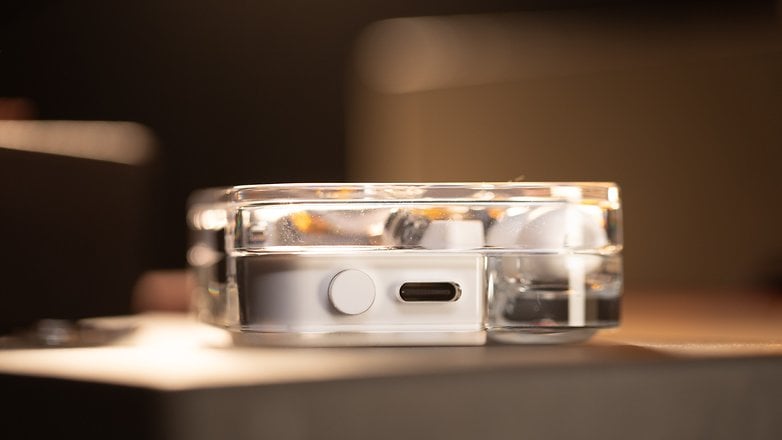
Without Active Noise Cancellation, the Nothing Ear can last 8h 30m on a single charge. You can recharge them up to four times using the case. Compared to many of our competitors, this is very good or even better.
However, Active Noise Cancellation has a very heavy impact on the battery life. With ANC enabled, the Nothing Ear only lasts 5h 12m. That's still more than enough for normal use but I found the difference to be rather large.
The Nothing Ear offer wireless (and also reverse wireless charging) charging at 2.5 W. Personally, I always had the Active Noise Cancellation set to "high" and an average listening volume of 50% on my smartphone. Based on these settings, I easily exceeded 5 hours of use.
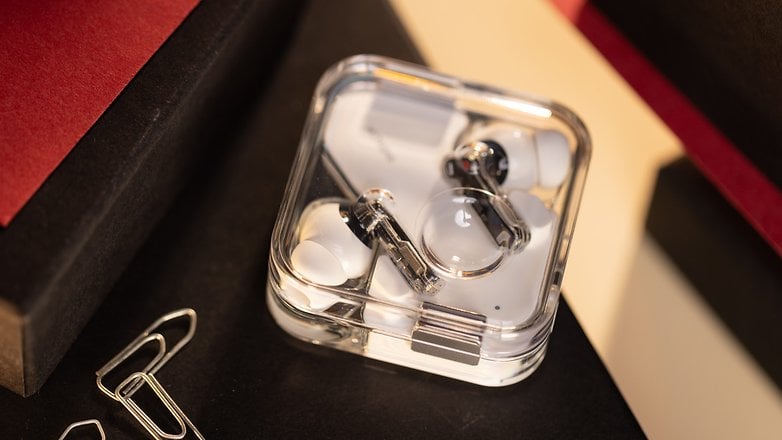
Technical data
| Technical data | |
|---|---|
| Device |
Nothing Ear
|
| Design | Format: semi-intra ear | wear detection | haptic controls | IP54 (earphones) | IP55 (case) |
| Weight per earbud: 4.62 g | Case weight: 51.9 g | |
| Case dimensions: 55.5 x 55.5 x 22 mm | |
| Audio | 11 mm driver, ceramic diaphragm |
| Frequency response | 20 - 40,000 Hz |
| ANC |
|
| Bluetooth | Bluetooth 5.3 |
| Codecs SBC, AAC, LDAC, LHDC 5.0 | |
| Multipoint | |
| Battery life |
|
|
|
| Price | $149 |
Final verdict
Would I advise you to buy the Nothing Ear for $149? That's a big "Yes" from me. The value for money proposition is obvious. The HD codecs supported, Hi-Res certification, a timeless stylish design, solid battery life, and decent Active Noise Cancellation, the Nothing Ear always had plenty of good points.
I sincerely appreciate the philosophy behind the product. By virtue of giving users the choice to make their experience more or less complex. I can manually adjust the level of Active Noise Cancellation to suit my environment, or I can leave it to Nothing's algorithm to automatically adapt the ANC.
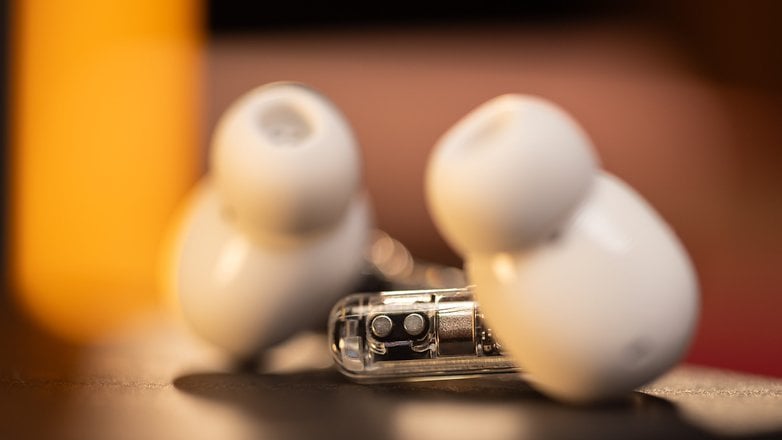
I can fiddle with the three-band equalizer in the Nothing X application on the go, or I can go all out as a pretend sound engineer with the Q factor, etc. I can listen to my MP3 tracks in AAC quietly without any pretension, or I can activate the LHDC codec and let myself be tempted by Hi-Res tracks on Apple Music, Tidal, or with my own local files.
Nothing doesn't fall into the snobbery that is inherent in the audiophile sphere. However, it does try to offer a few more options for those who want to listen to more than just Ogg Vorbis or MP3 tracks over Spotify.
What do you think of the Nothing Ear after this review? Do you intend to try it out or even buy the brand's latest true wireless earbuds? Do you have any questions about Nothing Ear that I haven't answered in this review?
